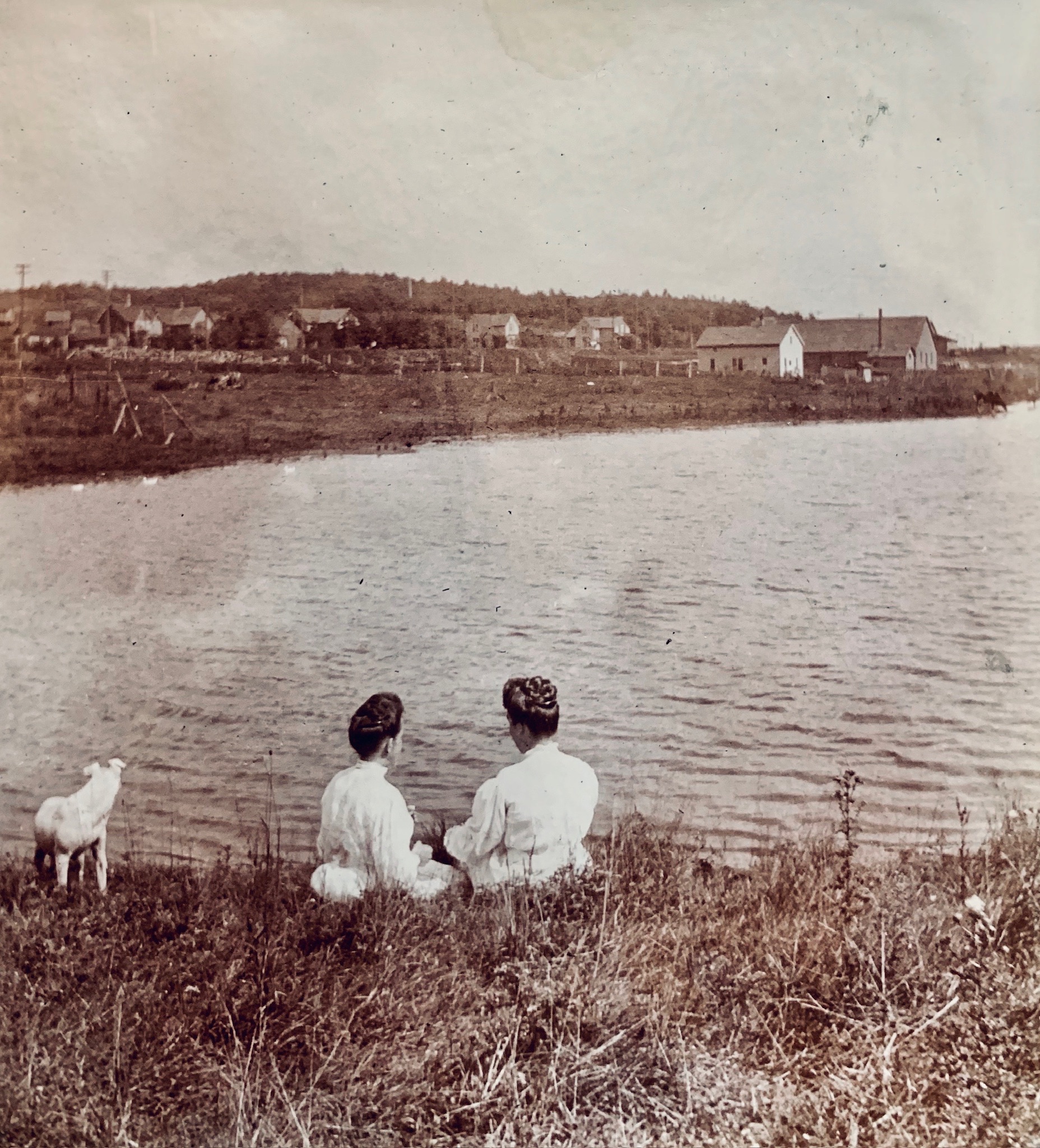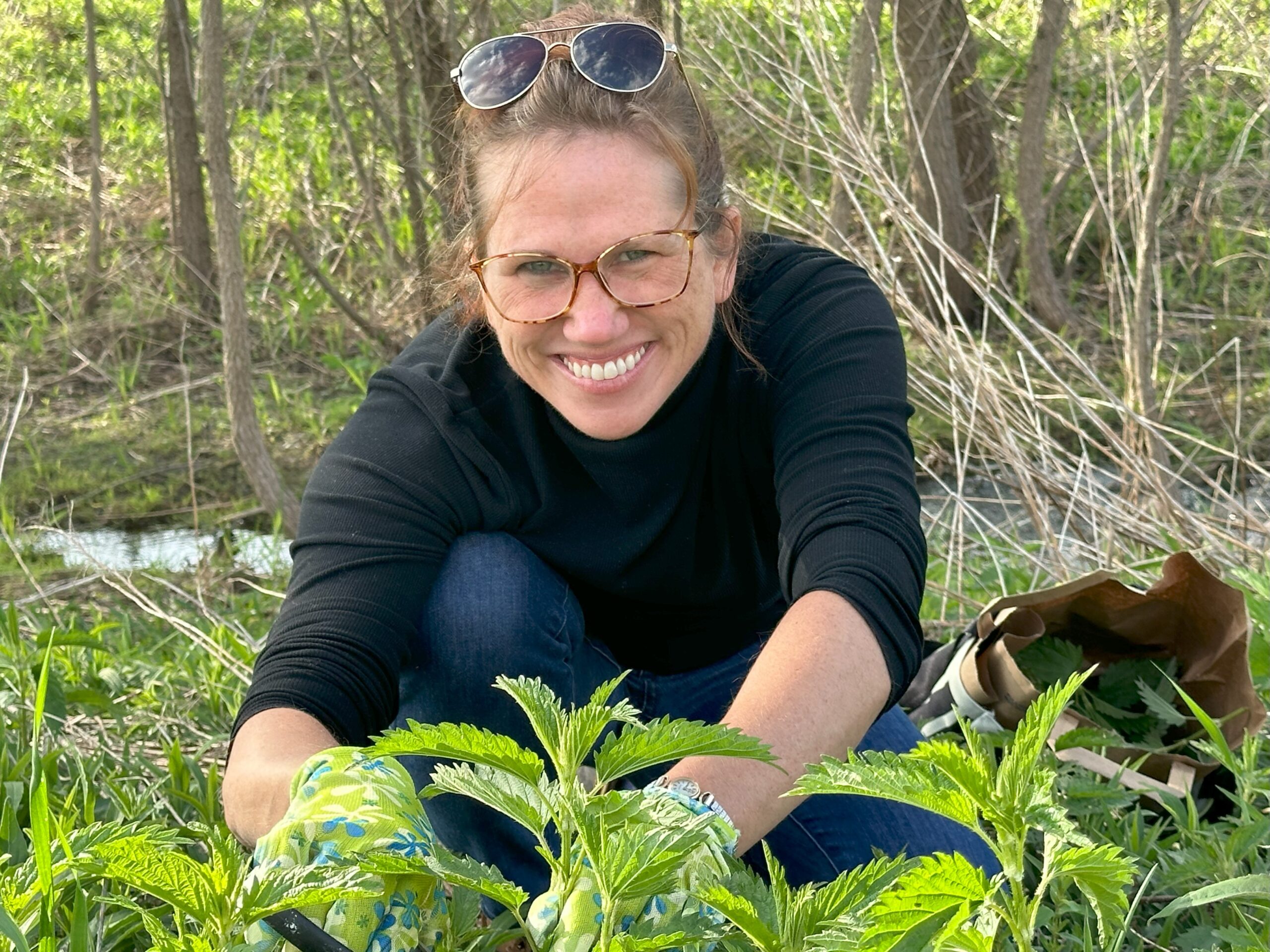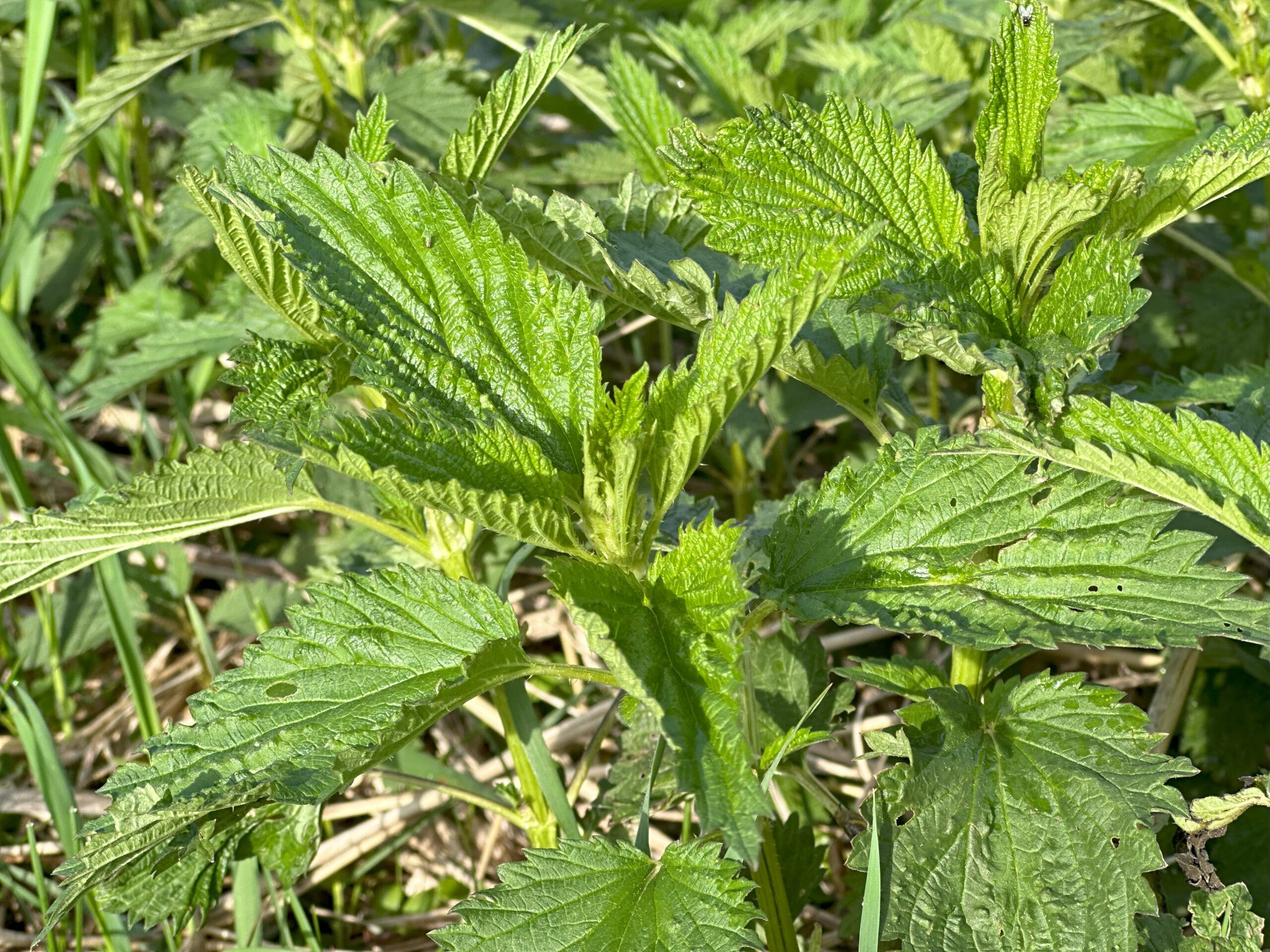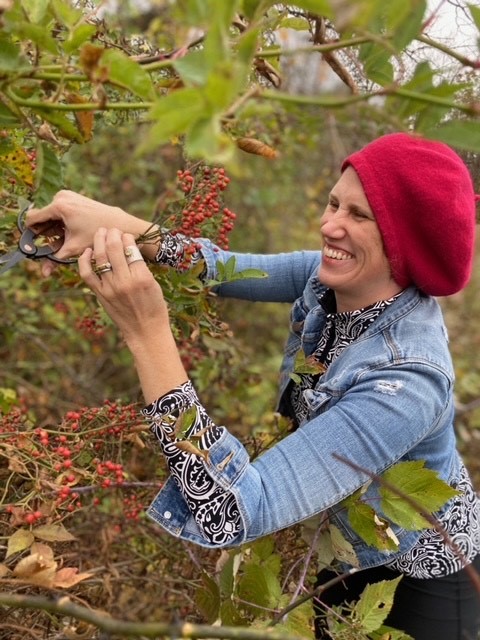This story is part of “A Year in the Wild Kitchen of the Great Lakes,” a sequence in partnership with knowledgeable forager Lisa M. Rose with the mission of nurturing a deeper reference to the pure world by way of foraging. To get began along with your foraging journey, start right here with our “Framework to Sustainable and Safe Practices.”
Foraging encourages sustainability and promotes a deeper understanding of ecological stability by fostering a relationship with native ecosystems. By mixing the previous with the brand new — conventional recipes with wild, foraged meals — we not solely protect our culinary heritage but in addition embrace a sustainable strategy to consuming and land conservation that honors each our previous and our planet and our collective future. Learn on to study extra about my Cornish ancestry and the way I’ve given the Up North Pasty recipe a brand new twist with the wild, foraged flavors of the stinging nettle.
Cornish Culinary Heritage in Calumet, MI
Cornish immigrants performed a major position within the mining historical past of Calumet, Michigan, throughout the copper increase of the nineteenth century. Their migration primarily began within the 1840s and continued effectively into the late nineteenth century.
Cornish miners have been extremely wanted for his or her mining abilities, significantly in hard-rock mining strategies, which have been important for the copper-rich however difficult geological formations of the Keweenaw Peninsula.
They introduced with them experience in high-risk areas of mining, together with blasting and tunneling in deep underground shafts. Their information in setting up and managing engine homes for steam-powered pumps, which have been essential in holding the deep mines dry, was additionally invaluable.
Cornish come to Calumet
Cornwall, situated within the southwest of England, was a famend heart for tin and copper mining, however by the mid-1800s, these industries started to say no because of exhausted ore deposits and competitors from overseas.
On the identical time, the invention of huge copper deposits in Michigan’s Higher Peninsula provided new alternatives. The area’s want for knowledgeable miners coincided with the financial hardships confronted in Cornwall, prompting many Cornish miners, referred to as “Cousin Jacks,” emigrate to areas internationally with extra affluent mining alternatives.
My circle of relatives of Cousin Jacks and Cousin Jennys first immigrated to Calumet from Cornwall in 1864. My third nice grandfather, William James Downing arrived from Cornwall to Calumet, initially leaving his spouse and kids behind to hunt out extra affluent mining alternatives than what the mines of Cornwall might present.
The Downing household dwelling in Constantine, Cornwall round 1870. (Picture courtesy of Lisa M. Rose)
By 1870, William James had sufficient cash and despatched for his spouse, Caroline and their three kids to hitch him in Calumet. Whereas life in Calumet for a miner was robust, the transfer to the USA gave them appreciable extra alternative and made approach for a greater life for his or her household and subsequent generations.

The Downing & George household shoreside within the Keewenaw, circa 1910. (Picture courtesy of Lisa M. Rose)
The Cornish Kitchen
Other than their technical contributions, Cornish immigrants additionally had a profound cultural affect. They launched the Cornish pasty (pronounced past-ee) to the area, a hearty, easy-to-carry meal ideally suited to miners’ lengthy, labor-intensive days underground. This culinary custom has remained a beloved staple within the space to today.
The Pasty
The Cornish pasty is a conventional meals from Cornwall, England, deeply rooted within the area’s mining heritage. Its origins hint again to the seventeenth and 18th centuries, gaining reputation as a sensible meal for miners.
The pasty’s design — with its thick, crimped crust forming a pure deal with — allowed miners to eat it with soiled palms with out contaminating the filling. This crust was usually discarded after consuming to keep away from consuming the arsenic and different toxins current from dealing with ores.

Making ready the pasty: The pasty has crimped edges which as soon as allowed the miners to carry the pasty by the crust – which might then be discarded to keep away from ingesting hazardous supplies the miners usually dealt with whereas beneath floor. (Picture Credit score: Lisa M. Rose)
Cornish pasties weren’t solely sensible but in addition nutritious, full of meat, potatoes, and greens — all components that would maintain a miner by way of lengthy hours underground. As Cornish miners emigrated to varied components of the world, together with the Higher Peninsula of Michigan, they introduced their pasty-making abilities with them, embedding this culinary custom into the native tradition of mining communities globally.
Crafting the Nettle Pasty: A Culinary Fusion

Lisa M. Rose, sharing her wild and foraged pasty recipe within the kitchen, as generations of her Cornish ancestors did when arriving from Cornwall within the late 1800s. (Picture Credit score: Nigel J. Younger)
The pasty is especially necessary to me due to my household’s Cornish roots. My mom would make dozens at a time and put together them for the freezer – an effort of affection that fed our household effectively when budgets have been lean throughout the attempting financial instances of the Eighties.
Whereas I wasn’t capable of absolutely admire the pasty as a baby (admittedly they have been fairly bland for my very own preferences, and would douse them in mustard), I’ve come to embrace the symbolism of the meals as a considered one of resilience, nourishment, arduous work, household, and love.
To that finish, and Impressed by the rugged spirit of these Cornish miners and the luxurious panorama of Michigan’s Higher Peninsula, I made a decision to mix custom with native foraging to create the Nettle Pasty. This recipe infuses the hearty, comforting Cornish pasty with the wild, earthy taste of nettles, picked from the exact same land that these miners walked.

Nettles able to be remodeled into the Wild Nettle Pasty. (Picture Credit score: Lisa M. Rose)
Why nettles?

Gathering Nettles Creekside. (Picture Credit score: Nigel J. Younger)
If you happen to’re keen on spinach, nettles would possibly simply turn into your new favourite inexperienced. Identified scientifically as Urtica dioica, these vegetation should not solely full of vitamins but in addition boast a wealthy, spinach-like taste that makes them good for culinary use. From pizzas and pastas to egg scrambles, nettles add a nutritious twist to varied dishes, providing extra minerals and plant protein than their leafy counterparts.
Nettles thrive in nitrogen-rich, damp soils and might usually be present in areas adjoining to water our bodies. They demand respect; their tremendous, hole hairs launch formic acid upon contact, inflicting a stinging sensation harking back to rubbing in opposition to fiberglass. However worry not — this sting is neutralized when the nettle is cooked, and its nutritious potential is unleashed.
Nettle is a perennial, deep inexperienced plant that reaches heights of seven ft in wealthy, nutrient-dense soil. Its reverse leaves are rectangular, darkish inexperienced on high and lighter inexperienced beneath, coated in fuzzy hairs, and roughly toothed and deeply veined. One in all nettle’s chief identifiers is its sting. Stinging nettle doesn’t actually have stingers or thorns, however as an alternative has tremendous, hole hairs full of formic acid that break open on the pores and skin.
When and The place to Forage for Nettles

Nettles able to be remodeled into the Wild Nettle Pasty. (Picture Credit score: Lisa M. Rose)
One of the best instances to go nettle-hunting are within the gentle climate of spring (April to June) and the crisp days of late fall (October to November). Search for these hardy vegetation in nitrogen-rich, damp, well-drained soils — usually close to rivers, streams, lakes, or moist woodland areas.
As a result of nettles will take up minerals and contaminants in surrounding soil keep away from gathering nettles on or downstream from an instantaneous space that was used as a mine or mine processing space. For extra data on protected and sustainable foraging go to my column, Your Foraging Journey: A Framework to Sustainable and Safe Practices.
Tips on how to Harvest Nettles
When gathering nettles, gear up with harvesting gloves to protect your self from their sting. Go for the younger, tender leaves and stems early within the season for the perfect taste and texture. Nettles can develop fairly tall, however the excellent size for gathering is about 18 inches, good for bundling and drying. Whether or not you’re drying, freezing, or utilizing them contemporary, nettles are extremely versatile within the kitchen.
Past Meals: Foraging Helps Heal the Land
In areas like Calumet, Michigan, which have a legacy of commercial mining, using foraged components and the follow of foraging might be significantly helpful for environmental restoration for a number of causes:
- Consciousness of Contaminants: Foraging requires information of the native atmosphere, together with understanding areas that could be contaminated by industrial residues corresponding to heavy metals. This consciousness can immediate foragers and the group to advocate for and take part in cleanup efforts. Foragers can act as environmental stewards, monitoring the land and figuring out areas the place soil and water may be contaminated and thus prioritizing them for restoration efforts.
- Phytoremediation: Sure vegetation are recognized for his or her potential to extract and stabilize heavy metals and different contaminants from the soil, a course of referred to as phytoremediation. By strategically foraging and selling the expansion of those vegetation in contaminated areas, the group can have interaction in a pure type of land rehabilitation. This not solely helps in cleansing up poisonous residues from mining but in addition prepares the land for different makes use of sooner or later.
- Selling Native Plant Progress: Foraging that focuses on native vegetation can increase their development, which in flip may help out-compete invasive species which may in any other case take over areas disturbed by mining actions. Native vegetation are essential for sustaining native biodiversity and might contribute to the general well being of ecosystems, which is important for habitats which were degraded by way of industrial actions.
- Group Involvement and Schooling: Participating the area people by way of foraging actions can improve public understanding of ecological points and the significance of land and water stewardship. This may result in elevated community-led conservation efforts, together with cleanups, planting native species, and different restoration actions. Educating the general public concerning the environmental affect of mining and the potential for pure restoration can foster a collective duty in direction of the native atmosphere.
- Financial Options: Encouraging foraging and using foraged components may present financial advantages, corresponding to the event of native markets for foraged items or eco-tourism associated to pure and historic heritage. These financial alternatives can supply sustainable options to industries that trigger environmental degradation, selling a extra balanced strategy to native growth.
In Calumet and comparable areas, integrating foraging into the group’s life-style not solely contributes to ecological restoration but in addition helps in rebuilding a wholesome, sustainable relationship between the residents and their pure atmosphere, turning the scars left by industrial actions into alternatives for development and renewal.
Recipe: Foraged, Wild Nettle Cornish Pasty from Michigan’s Copper Nation

Nettles able to be remodeled into the Wild Nettle Pasty. (Picture Credit score: Lisa M. Rose)
Impressed by the resilience of my Cornish mining ancestors and the verdant wilderness of Michigan’s Higher Peninsula, I created this Wild Nettle Pasty. This progressive recipe infuses the standard Cornish pasty with sautéed wild nettles, providing a style that’s each strong and nuanced. The nettles are ready with care, sautéed with onions and garlic to unlock their flavors earlier than being enveloped in a flaky, buttery pastry alongside hearty fillings of beef, potatoes, and rutabaga.
Start with making ready the nettles — sautéed gently with onions and garlic to boost their taste. The pastry is easy, but it holds the strong filling of beef, greens, and nettles completely. Baking transforms these components right into a golden, flaky pasty that’s each a nod to the previous and a celebration of the current.
Substances:
- For the Pastry:
- 4 cups plain flour
- 1/2 cup lard or unsalted butter, chilled and diced
- 1/2 cup vegetable shortening, chilled and diced
- 6-8 tbsp chilly water
- Pinch of salt
- For the Filling:
- 2/3 lb skirt steak or beef chuck, finely chopped (or portobello mushrooms)
- 1 cup potato, diced small
- 3/4 cup rutabaga, diced small
- 1 giant onion, finely chopped (divided use)
- 2 cloves garlic, minced
- 1 packed cup wild nettles, roughly chopped (use gloves to deal with)
- 2 tablespoons butter
- Salt and pepper to style
- A knob of butter (optionally available, to high every pasty)
Directions:
- Put together the Nettles:
- Dealing with: Carrying gloves, rinse the nettles totally to take away any filth or bugs. Roughly chop the nettles whereas nonetheless sporting gloves to keep away from stings.
- Sautéing: In a skillet, soften 2 tablespoons of butter. Add half of the chopped onion and the minced garlic, sautéing till they begin to turn into translucent. Add the chopped nettles to the skillet. Prepare dinner over medium warmth, stirring steadily, till the nettles are wilted and tender, about 5-7 minutes. Take away from warmth and let cool.
- Put together the Pastry:
- In a big bowl, sift the flour and salt collectively. Add the chilled lard and vegetable shortening.
- Rub the fat into the flour utilizing your fingertips till the combination resembles coarse breadcrumbs.
- Step by step add chilly water, mixing till the dough comes collectively. Type right into a ball, wrap in cling movie, and chill for about half-hour.
- Put together the Filling:
- In a big mixing bowl, mix the sautéed nettle combination, chopped beef, remaining onion, potatoes, and rutabaga. Season effectively with salt and pepper. Combine totally to make sure the flavors are effectively distributed.
- Assemble the Pasties:
- Preheat your oven to 425°F.
- Roll out the chilled dough on a frivolously floured floor to about 1/4 inch thickness. Minimize out rounds utilizing a plate or giant cutter (about 20 cm diameter).
- Spoon a beneficiant portion of the filling onto one half of every pastry spherical. Place a small knob of butter on high of the filling if utilizing.
- Brush the sides of the pastry with water, then fold the pastry over the filling to kind a semi-circle. Press the sides collectively firmly.
- Crimp the sides by pinching and folding the pastry to seal within the filling utterly.
- Make a small slit within the high of every pasty to permit steam to flee throughout baking.
- Bake the Pasties:
- Place the pasties on a baking sheet lined with parchment paper.
- Bake within the preheated oven for 20 minutes, then scale back the temperature to 350°F and bake for an additional 40 minutes till golden and cooked by way of.
In regards to the Creator
Lisa M. Rose is an ethnobotanist, wild meals chef, and creator with a profound dedication to exploring the symbiotic relationship between people and vegetation. With an educational background in anthropology and group well being, her culinary journey has been wealthy and diverse, together with stints with notable institutions and figures corresponding to Stags Leap in Napa Valley, Alice Waters’ The Edible Schoolyard, and natural farmers in Northern Michigan.
Rose’s work is celebrated in her bestselling books, “Midwest Foraging” and “Midwest Medicinal Plants,” amongst others and her experience is steadily sought by main media retailers, together with the Chicago Tribune, PBS, NPR, Martha Stewart and CNN.
Catch extra information at Nice Lakes Now:
Foraging’s Spring Backyard Splendor: Dandelions and Violets
A Fleeting Wild Taste of Spring Ephemerals: Ramps and Ostrich Fern
Featured picture: Lisa M. Rose, foraging wild nettles for her wild nettle pasty recipe. (Picture Credit score: Nigel J. Younger)


